資料介紹
相關專題學習資料:- Modo教程/視頻教程
- 3D處理軟件工具
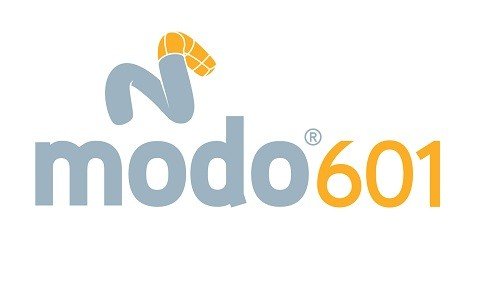
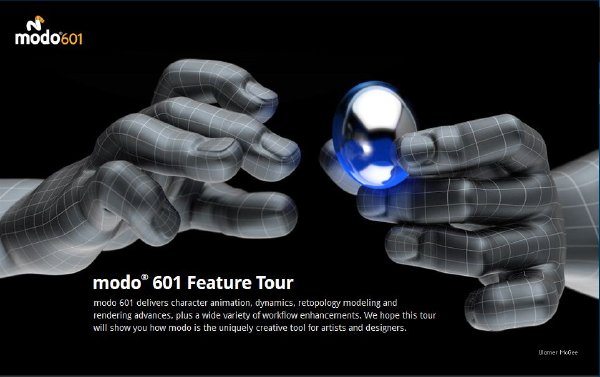
語言:英文
網址:http://www.luxology.com/modo/
類別:三維繪圖
Modo是一款獨特的,藝術且友好的三維軟件,它為藝術家和設計師提供了建模、繪畫、動畫和渲染一整套完整的工作流程,用戶可以在建築設計、景觀設計、工業設計、包裝設計、平面設計、游戲設計、電影電視動畫特效、教育及科學研究等眾多領域使用到它。當你購買modo的時候,你會發現我們的modo, 同時可以在PC 和Mac平台上使用,因為我們是把軟件授權給你,而不是給你的計算機。
Modo601的新特性和改善的工作流程包括:
角色動畫制作
Modo提供了一系列的動畫角色功能,從方便使用的工具到清晰的角色裝備,都可以通過逆向運動學原理和分層造型工具通用系統操作。
動力學
以Bullet物理引擎2.79版為基礎的剛性和柔體動力學,是現在的Modo標准的一部分,提供逼真的運動和有機的模擬仿真。
再拓撲模型工具
專用再拓撲模型工具簡化了輸入幾何學清潔模型的快速更新。
渲染與色差
逼真的渲染性能包括溶劑渲染,渲染布爾值,頭發和皮膚的色差,以及環境硬齒面模式。輪廓中間色著色提供了不夠逼真的表現因素。
3D繪畫
多功能的繪圖系統,在Modo601這裡延伸到了在網格上的標度,清除和光滑的頂點(權重)。
色差工作流程
預覽渲染器被用於最後成像,因為會給衣服圖片逐漸著色,直到達到完全想要的效果。綜合的渲染體系,增加新的交互圖像處理和校對工具,使圖像快速精修。
建模
皮克斯動畫工作室平面模型包括在增加單個的垂直標注和控制解析度顯示的性能。 快速選擇能快速在建模時精確隔離模型組件。
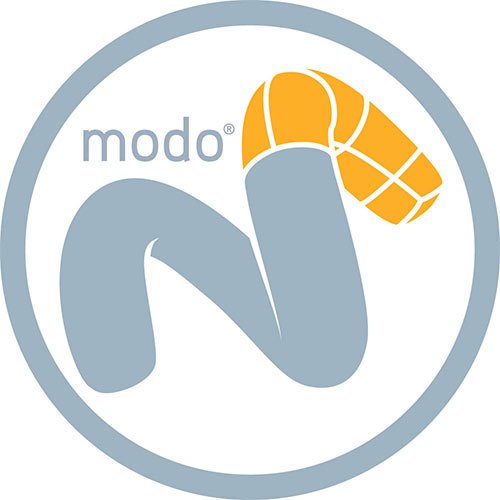
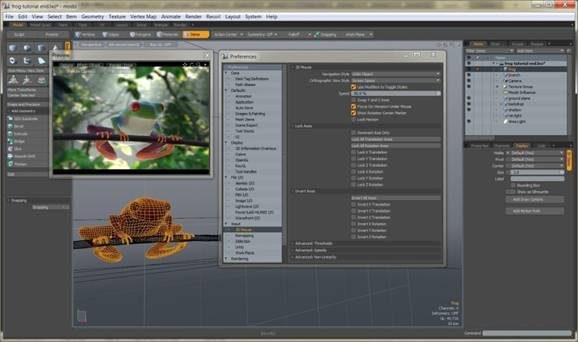
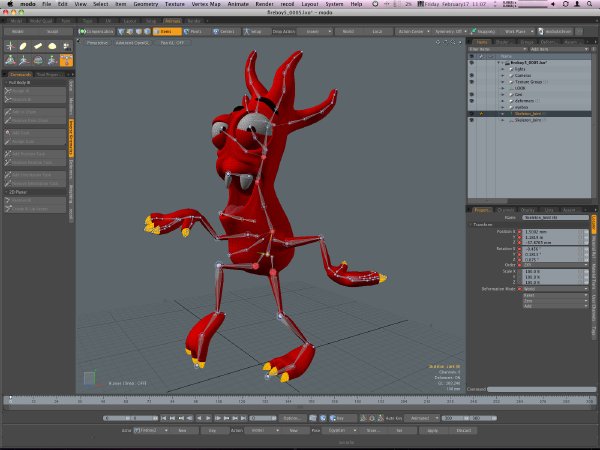
Luxology modo delivers the next evolution of 3D modeling, painting and rendering in a single integrated and accelerated package for the Mac and PC. And now, modo is a true end-to-end solution that includes true 3D sculpting tools, animation and network rendering! More than just features, modo is a truly elegant integration of technology, raw horsepower and refined workflow.
Go beyond the traditional 3D workflow to an immersive creative environment.
modo delivers the next evolution of 3D modeling, animation and rendering in a single integrated and accelerated package for the Mac and PC. More than just a collection of features, modo is a truly elegant combination of technology, performance, and refined workflow.
Production-ready polygon/SubDivision surface modeler for organic and hard-surface modeling
modo has the fastest, most advanced polygonal and subdivision surface 3D modeling environment available, specifically designed to help you accomplish more in less time than ever before. The modeling and selection tools in modo are honed by years of experience to work just as you expect them to. Superior navigation controls in modo and ray-traced OpenGL views make the visual experience of modeling in modo as rich as the toolset. Integrated Sculpting Tools right in modo make it easier than ever to fluidly create characters, terrain or to add high frequency detail. Snapping tools are combined with modo’s Action Center and Falloffs to let you model with precision and control. And in modo, UV editing is no afterthought – it is at the core of the package.
Polygon/Subdivision Surface Modeler
Whether you require precise rigid body models or character models with perfect “flow,” modo has you covered. The vertex, edge and polygon tools you need to create world-class models are ready to work for you the way you want them to. At any time you can convert to Subdivision surfaces using modo’s classic representation – or to Pixar Subdivision surfaces which offer semi-sharp creasing and multi-resolution sculpting at whatever level of detail you need. Intelligent selection tools anticipate what parts of the model you want to work on and a system of action centers and falloffs modulate how the tools work. Snapping and workplane functionality is so flexible that it lets most modo users model in a single perspective view.
Precision
modo lets you construct geometry with precision by allowing you to snap to existing geometry or to points on the modo workplane. You can also easily align your workplane to any selection set. Consider the most basic of drawing tools in modo, the Pen tool, which lets you place vertices to form geometry. As you are drawing, modo displays ghosted guidelines that allow you to draw at right angles or continue on the same angle to create a straight line from the last two vertices. Similarly, you can move or rotate existing points in your model to snap to another vertex, edge, mid-edge, polygon, or polygon center. Want to type in a value? You configure modo to work in whatever units you want and you can type in strings like 4m+6in and modo does the math (4 meters plus 6 inches) for you!
Sculpting
For some modeling operations you don’t want precise bevels and beautiful curves, you want a more organic approach to modeling, be it terrain or any other freeform shape. Two kinds of sculpting tools are provided in modo: mesh-based and image-based. Mesh-based tools let you modify the overall shape of an object and act on the limit surface itself. You can use mesh sculpting to gently nudge the shape of an object or to radically affect its shape.
And when you want to carve a wrinkle or a gash across the surface, image-based tools are at the ready. With image-based sculpting you are creating a displacement at any level of subdivision you want. There is incredible freedom in having sculpting tools that work right alongside traditional modeling tools.
Profile Modeling
Profile modeling enhances operations like extrusion or sweeping via the use of 1D and 2D profiles. As you model, you can select from various profiles to easily create things like handrails or crown molding in a house. You can also build your own profiles from lines and curves for later re-use.
Replicators
modo has a new way to replicate geometry across your scene to create trillion polygon detail in your renderings. Use this to add barnacles to the hull of a ship, or create a forest of trees. Any mesh can be replicated along a surface with additional controls over scale and orientation.
modo can help you create efficient new meshes with perfect data flow on top of dense CAD or scanned datasets. As you create or transform new geometry it can be constrained to the dense background mesh.
World-Class UV Editing
To create perfectly textured models, you need easy access to world-class UV editing tools and the legendary UV editor in modo gives you the ideal environment for the job. In many cases, it is as simple as Click. Unwrap. Done. And with modo, you can build your UV map then create morphs with topology changes and not be concerned with wrecking your UV’s.
Need more UV control? An interactive UV Relax tool will adaptively relax your mesh, minimizing angular and area distortion. Even holes in your mesh (like eyes) are correctly handled in most cases. When there is overlap, those areas are easy to spot with modo’s highlighting feature. UV editing has become – dare we say it – almost fun.
Toolpipe (Custom Tool Creation)
modo’s Toolpipe lets you create an infinite number of specialized modeling and selection tool variants that you can assign to hotkeys or other parts of the user interface. With the Toolpipe, you are able to combine modo’s robust set of powerful modeling tools with falloffs and action centers in new combinations to customize the way a given tool feels, looks and affects geometry. You can either use modo’s tools as supplied, or leverage the Toolpipe to create a tailored set of tools that work exactly the way you want them to.
Cutting Edge Toolset
modo’s robust modeling toolset provides you with simple and intuitive solutions to the most complex modeling challenges. Here are some examples of the modo tools that will make 3D modeling a more creatively inspired experience for you.
Powerful, flexible painting system works in 2D and in 3D, across multiple images and UV maps
With modo, you have an integrated painting system that delivers what many believe is the most pleasing 3D painting experience available. modo leverages GPU technology and multi-threading to take advantage of modern OpenGL hardware, letting you stroke details onto your 3D models with speed, and see Normal maps, Displacement maps and transparency as you paint in the viewport. There is something about painting directly on a 3D model that is incredibly satisfying. And more than just being fun, it is a highly efficient way to create or modify the textures on your model because you can see exactly where you are painting all the time. In addition to painting on 3D objects, you can also paint in 2D, or paint on the backdrop item — or on image sequences. modo delivers the right combination of performance, tools and feedback for the ideal 3D painting experience.
Nobody wants to work with a brush that stutters or lags behind as you paint. In modo, painting is multi-threaded for maximum performance — even when using large brush sizes modo delivers optimum performance on modern computing hardware. That’s how we are able to provide procedural brushes that work fluidly, along with the option to blend (e.g. color dodge) in over a dozen ways while painting. As you paint in modo, you can be painting across multiple images on multiple UV maps.
Ready Access to Tools
A specialized layout in modo for 3D painting gives you quick access to the tools you need for a rich 3D painting experience. All painting is done with a combination of a tool (e.g. smudge) plus a brush (e.g. smooth brush), and the desired ink (e.g. parametric). A panel below the canvas provides you with an image browser (you can actually paint with images), a color picker and a brush preview. The brush preview even shows you how your stroke will fall off at the end of the stroke. You can paint with any pointing device, a pressure sensitive tablet being the preferred one. Painting with symmetry is supported. Want to change brush size? Just right click and drag out the size of your brush, and then keep painting.
Brushes and Inks
A wide variety of tools are provided, including airbrush, paintbrush, eraser, clone, line, fill, smudge, blur and lasso. Each tool has properties that include not just color but also opacity and blending modes. Several brush types are provided (stamp, roller, text, procedural) or you can supply your own and select the one you want from the brush browser. Finally, there are the inks... these let you do anything from painting an image onto your model (image ink) to using a parametric ink that modulates the color of your ink depending on the height of the displacement you’re painting over. If you like, modo will apply the ink according to the slope or altitude of the surface you are painting on. This makes painting fresh snow on a mountain range or adding pitted surfaces on the leading edges of a wing an easy task. You can also take advantage of real-time mask painting for brush-based control over how two different images (pristine and battle-damaged for example) blend together.
Paint by Layer
Driving the modo renderer is the Shader Tree, which is modo’s user interface for describing the appearance of items and the environment, and how lights and cameras should interact with them. Any images you select in the Shader Tree can be painted on immediately in modo.
With this direct access to modo’s Shader Tree, you can leverage 3D painting to adjust complex surface appearances layer by layer. This isn’t just about brushing on new colors — you can paint bump maps in real-time or paint into channels to affect the specular highlights. modo's Shader Tree also allows you the freedom of painting non-destructively by utilizing the familiar functionality of layer and mask based painting found in popular 2D painting tools. In fact, you can import .PSD files into modo and paint separately on each of the layers found in the file; you can also export UV maps to Photoshop for painting there if you prefer.
Ultra-fast rendering that utilizes as many cores as you have on your system. Instance and replicator rendering to trillion polygon detail.
modo comes fully equipped with one of the world’s great renderers for creating gorgeous images and animations — and for baking out textures for game engines. The renderer is provided as both an offline renderer and as an integrated Preview Renderer that updates nearly instantly as you model, paint or change any item property within modo. The modo renderer is an over-achiever that offers that rare blend of speed and quality, and is licensed for network rendering on up to 50 workstations.
Seriously Fast
The modo render engine is fast, with the ability to render our trillion polygon detail at enormous frame sizes. modo can render print resolution files (e.g. 20K x 20K) using as many cores as you have on your workstation. Under the hood, the modo renderer is a fast ray-tracer with instancing support that uses high dynamic range radiance units throughout. It is highly scalable on multi-core systems, delivering nearly linear speedups as more processors are added. The renderer’s innately fast performance is a combination of very tight code and a unique front-end that decouples many key computations, thus allowing for huge flexibility in balancing memory use, speed, and quality.
Preview Renderer
The modo Preview Renderer is a constantly rendered view of your scene through any selected camera where you see the effect of every modeling, lighting or material change you make in the scene. If nothing is happening in the scene, the Preview Renderer will progressively render to near final quality. This is a game-changing way to work, for you are essentially doing hundreds or thousands of test renderings as you are working. By the time you do a final render, you know exactly what it is going to look like. And you also quickly become familiar with how every parameter in modo affects your final rendering because you can see each individual change as it is made.
Accurate Lighting Models
Global illumination and physically-based shading models are available, providing for advanced optical phenomena such as anisotropic blurry reflections, caustics, dispersion, blurry refraction and subsurface scattering. modo includes Physical Sky and Physical Sun rendering for accurate sunlight at any location as well as support for photometric lighting through the IES standard. Volumetric lighting with Deep Shadows is supported. Light linking allows you get the right amount of light in every part of your scene and lighting rigs of many kinds are included in the many Presets that come with modo.
Surface Realism
The modo renderer is capable of trillion polygon renderings with astonishing detail. Micropoly tessellation at render time delivers effects like skin, slightly rough surfaces or even terrain with greatly heightened believability. Instance Replicators deliver additional depth and detail by letting you add almost limitless numbers of any geometry such as pebbles, trees, barnacles or thorns to your renderings.
Anisotropic highlights and support for Fresnel reflections deliver realistic metallic surfaces and correct reflections and refractions at any angle to the camera. You can texture the blurry reflection anisotropy direction for materials like carbon fiber. And beneath the surface, transparency absorption automatically considers subsurface density for realistic portrayal of tropical lagoons, skin or wax.
Fur
modo supports a variety of sophisticated materials (including procedurals) and Fur. This versatile material allows a wide variety of things from hair, tinsel, grass, and even fur to be applied to surfaces. The fur can be driven by textures, and has many parameters including root bend, transparency and gravity. You can apply Fur using Fur Presets and then style Fur interactively, using the Sculpting tools.
Camera Model
Realistic camera models with industry standard camera backs, adjustable field of view, lens distortion and focal length are provided. Stereoscopic rendering is supported. A spherical projection type for camera items allows the creation of spherical environment maps, including export of modo-created panoramic HDRI’s.
Time-Enabled
The modo renderer is specifically engineered to exhibit temporal fidelity across multiple frames. The renderer is designed to support animation, and so shadows and even blurry reflections remain stable from frame to frame. A global illumination walkthrough mode provides a clean, yet faster-per-frame approach for architectural animations. Both camera and object motion blurring are supported. Via the MDD format, the modo renderer can render out animated sequences from a number of other 3D applications.
Network Rendering
modo can be used on up to 50 Mac or PC workstations for network rendering; it is multi-threaded to use all available cores on each of your systems. Setup is extremely easy and is largely automatic; Systems set up in “slave” mode will accept buckets (tiles) to be rendered from a “master’ machine.
The image to the left shows network rendering in progress in modo. On the screen are buckets being rendered locally (gold color) and on the network (in blue). Each bucket corresponds to a single “core” on a local or network machine. The underlying network technology is Apple Bonjour.
Shader Tree
Driving the modo renderer is the Shader Tree, which is modo’s user interface for describing the appearance of items and the environment, and a place to specify how lights and cameras should participate in the production. The Shader Tree is based on a straightforward stack of layers that combine to produce the final results and is immediately familiar to anyone using Photoshop. The Shader Tree also provides full control over what final render passes should be produced (e.g. specular, alpha, many more).
Flexible Outputs
The modo renderer can produce a wide variety of individual render outputs, or it can be used to bake over thirty results (like geometric normals, diffuse shading, ambient occlusion) into image maps. A Constant Alpha option lets you easily create mask elements for compositing work. A wide range of output image formats are supported including layered PSD files, layered OpenEXR or a series of PNG files for example.
Modern animation tools in modo offer control and flexibility
modo provides an animation system that combines a strong feature set with a modern user interface. With modo’s intuitive animation controls, you can produce animated product assemblies, architectural walkthroughs and motion graphics. You can also read in animation files from other systems and render character animation and dynamics in modo.
Animation Done Here
modo contains everything you need to make items in your scene vary their appearance, location or virtually any other parameter over time. This can be as simple as animating the time of day for a sunlight study or as sophisticated as rigging a complex mechanical assembly such as the retractable landing gear of an aircraft. Innovative user interface elements like the Heads Up control for adjusting channel values smooth the process of creating animations inside of modo. A Graph Editor and Trackview offer other useful ways to precisely control how items and their properties animate in modo.
Vary Any Property
Setting a keyframe is as simple as moving to the frame you want and using Add Key after you have adjusted, for example, the opacity of an object in order to make it visible or invisible at a point in time. Color coding in the interface lets you see which values have been keyframed. There are dozens of properties you can keyframe on an object to affect how it looks and where it is in space at a given time. To animate a camera, just keyframe its position by navigating normally in a camera viewport and adding keys on the desired frames. modo will smoothly interpolate between each camera position when you play back the animation. Of course, you can also keyframe other camera attributes such as lens focal length or on focal distance (for effects like a rack focus).
Big Rigs
New to modo is the ability to create sophisticated assemblies that are driven by just a few controls. For example, you can create a rotary engine that is driven by a single “speed” control or roll up a set of blinds by rotating a crank.
These assemblies leverage modo’s ability to link the channels of one item to another, and to apply constraints and modifiers to the rig. Inverse kinematics let you move the end of a 2 joint chain and dynamic parenting allows operations like the arm opening and then releasing a door. A system of modifiers let you, for instance, add a noisy camera “shake” for enhanced realism.
Organic Animation
You can animate between any number of morph deformations in modo (morphs are sometimes called blendshapes). In this way you could animate between a smiling face and a frowning face for example. You can also stress test your morphs before exporting to them to other 3D animation packages. You have the ability to animate vertex maps using deformers for subtle effects like vibration or secondary animation effects.
Import and Export Animations
modo is equipped to read and write COLLADA files, a new standard for the exchange of model and animation data. modo can also read .MDD files to render animations created in other 3D applications. Handy tip: Point Oven (not included with modo) is a commercial suite of plug-ins designed to bake vertex and fcurve data into MDD files and is available for several popular 3D animation software packages.
Render It Out
When it comes to producing your final rendered sequences, the modo is ready to render animations that are rock steady and free of flicker and noise crawl. A special walkthrough mode for scenes with global illumination not only steadies the resulting animation but also improves rendering efficiency from frame to frame. Utilize motion blur to produce smooth results for fast moving objects like spinning propellers or industrial robots.
Sculpt or use traditional modeling tools at will. Sculpting is not a special mode in modo.
In modo, sculpting and traditional modeling are brought together in one application. modo offers two sculpting methods: mesh-based and image-based. You can use the sculpting tools to quickly push and pull your model into the shape you want or to add organic details not achievable with traditional modeling tools. Together, the combination of modeling and integrated in one application makes for a uniquely powerful 3D content creation experience.
Mesh-based Sculpting
Mesh-based sculpting tools modify existing points on a mesh with a brush and are the fastest way to move, smooth, inflate or flatten geometry. They are ideal for use as an extension to traditional modeling tools or for quickly roughing out a base shape that will then receive more detail using image-based sculpting techniques.
Available tools include: Push, Smooth, Carve, Flatten, Fold, Inflate, Smudge, Move, Tangent Pinch, Spin, Emboss, Mask. Numerous brush types are available for each tool. (Standard behavior is to perform the opposite effect with the Ctrl key depressed)
Image-Based Sculpting
modo lets you construct geometry with precision by allowing you to snap to existing geometry or to points on the modo workplane. You can also easily align your workplane to any selection set. Consider the most basic of drawing tools in modo, the Pen tool, which lets you place vertices to form geometry. As you are drawing, modo displays ghosted guidelines that allow you to draw at right angles or continue on the same angle to create a straight line from the last two vertices. Similarly, you can move or rotate existing points in your model to snap to another vertex, edge, mid-edge, polygon, or polygon center. Want to type in a value? You configure modo to work in whatever units you want and you can type in strings like 4m+6in and modo does the math (4 meters plus 6 inches) for you!
Integration
Sculpting is no isolated experience in modo; it is simply part of a larger toolset that you can use at any time. You have access to traditional modeling tools as you sculpt, just as you have tools to paint. The sculpting tools in modo use the exact same system of tool falloffs, brushes and inks as the rest of modo. With the Preview Renderer, you get a lit view of your work right as you are sculpting. When sculpting in modo, all the data is simply native to modo. The ability to add or remove base geometry without having to import or export a mesh increases your productivity. Likewise, there is no need to bake out a displacement map.
True Displacement
modo can work with a true vector displacement — not just height fields. This means you can store objects like a mushroom in a vector displacement map. You can even turn 3D geometry into a brush and sculpt using ears (or mushrooms).
Fur Sculpting
The sculpting tools in modo are not only for creating geometry, they are also used to control the Fur material. In modo , you can style Fur interactively, using the Sculpt tools on curves, which act as hair “guides”. Using the sculpting tools you can flatten the grass in a meadow or arrange the hair on the head of a model.
- 上一頁:《ASP擴展功能包軟件》(WebSupergoo ImageGlue DotNET )v7.2.0.2 x86|x64[壓縮包]
- 下一頁:《思維導圖軟件》(PersonalBrain)7.0.4.1[安裝包]
- [多媒體類]2009AE插件全集aetalk.cn整理
- [系統工具]《一鍵備份還原系統》(MaxDOS 8.0)簡體中文版[壓縮包]
- [編程開發]《DELPHI企業經營管理源代碼》(DELPHI7)DELPHI7開發的,編程開發、資源下載
- [多媒體類]《Native Instruments出品喬治公爵靈歌珍品音色工具庫》(Native Instruments George Duke Soul Treasures KONTAKT)[光盤鏡像]
- [網絡軟件]《模擬鐵路 擴展包》(Rail Simulator: Offical Expansion )破解版/修正破解補丁[ISO]資料下載
- [行業軟件]《铿利科技數字化建築學軟件平台》(Gehry Technologies Digital Project v1R3 SP8 2)[ISO]
- [應用軟件]《薪酬管理軟件》(ZPAY PayWindow Payroll Systems 2011)更新v9.0.51/含注冊機[壓縮包]
- [應用軟件]《linux新軟件》(veket software)2.8[安裝包]
- [軟件綜合]《定制安卓系統工具軟件制作安卓系統》(Android-master)0.221漢化版[安裝包]
- [編程開發]《軟件開發》(BASIS Product Suite)[光盤鏡像],編程開發、資源下載
- [人文社科]《鐵拳》(Tekken)[DVDRip]
- [光盤游戲]《月球飛行》(Lunar Flight)v1.671零售版[光盤鏡像]
- [電腦基礎]《Rick Smolan 創意啟示教程》(Lynda.com Rick Smolan Creative Inspirations)[光盤鏡像]
- [行業軟件]《ArchiCAD 10 真正建築軟件》(ArchiCAD 10)英文[Bin]
- [其他圖書]《夏商周斷代工程叢書》掃描版[PDF]
- [其他資源綜合]《精武潭腿》掃描版[PDF] 資料下載
- [計算機與網絡]《代碼重構(Visual Basic版)》(Professional Refactoring in Visual Basic)掃描版[PDF]
- [硬盤游戲]《美食小鎮偵探社》(DinerTown Detective Agency)中文硬盤版[安裝包]
- [學習課件]《升騰與墜落》(萌萌)掃描版[PDF] 資料下載
- [硬盤游戲]《呼喚英雄:波姆伯利克戰爭》(Call for Heroes Pompolic Wars)硬盤版
- 《Adobe Acrobat v7.0.8英文專業版》(Adobe Acrobat Pro v7.0.8 Corporate),應用軟件、資源下載
- 《廣告制作軟件》(CiberCut 5.6 Max)[ISO]
- 《Photoshop CS5 Extend 12.0.1 綠色/完整加強版》軟件街dragonsman原創綠色/完整加強版 [0703更新][壓縮包]
- 《Citrix Metaframe Presentation Server 4.0 ҵ》4,應用軟件、資源下載
- 《阿香婆家庭裝飾設計軟件》(Ashampoo Home Designer)v1.0/含補丁和注冊機[壓縮包]
- 《日語詞典
- 《Cadenas輔助設計軟件》(Cadenas Partsolutions v8.1.01)Multilanguage[Bin]
- 《ZBZ軟件3.0》(ZBrush
- 《任務安排工具》(Cypress Technologies LaunchPad Event Scheduler)v3.23/含注冊機[壓縮包]
- 《電子漫畫閱覽工具》(MangaMeeya)簡體中文[壓縮包]
- 《永中Office2007神華企業專用版》(EIOOffice2007)
- DVD播放插件
免責聲明:本網站內容收集於互聯網,本站不承擔任何由於內容的合法性及健康性所引起的爭議和法律責任。如果侵犯了你的權益,請通知我們,我們會及時刪除相關內容,謝謝合作! 聯系信箱:[email protected]
Copyright © 電驢下載基地 All Rights Reserved



